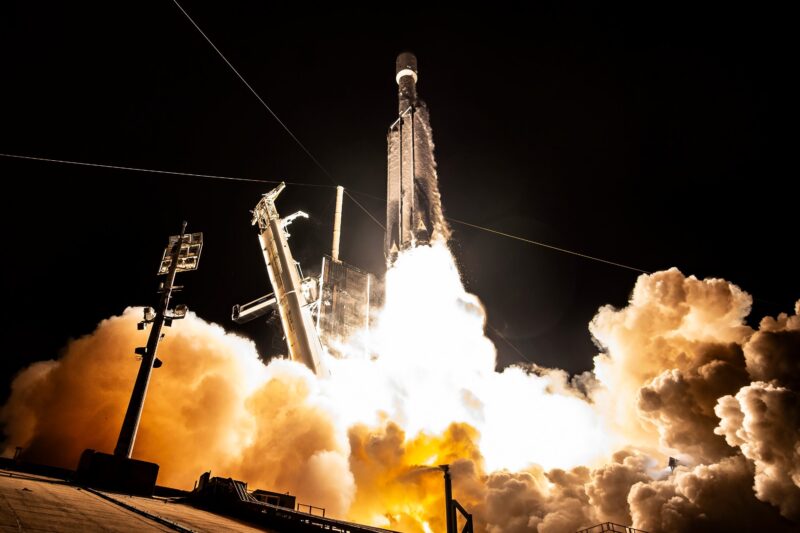Latest News

SpaceX launches Jupiter 3 for Hughes Network Systems in a July 28 Falcon Heavy mission. Photo: SpaceX
Hughes Network Systems’ long-awaited Jupiter 3 satellite is finally on its way to orbit after a late Friday night SpaceX launch. SpaceX launched Jupiter 3 on a Falcon Heavy mission from Launch Complex 39A at Kennedy Space Center in Florida at 11:05 p.m. on July 28.
The satellite was deployed three hours and 28 minutes after lift-off, and Hughes confirmed a successful launch and solar ray deployment.
Jupiter 3, also known as EchoStar XXIV, will double the capacity of the Hughes satellite fleet with an additional 500 Gbps over the United States, Canada, Mexico, Brazil, and more countries in South America. It will give Hughes much-needed capacity as the satellite operator is maxed out on its current fleet and continually losing subscribers amid competition from Starlink. The company ended the first quarter with 1,177,000 broadband subscribers.
The satellite will be positioned at 95 degrees West and support in-flight Wi-Fi, maritime connections, enterprise networks, backhaul for mobile network operators, Community Wi-Fi solutions, and residential broadband.
“Jupiter 3 is the highest capacity, highest performing satellite we’ve ever launched. As the leading provider and inventor of satellite internet, we’re proud to herald the start of a new era of connectivity and serve more customers where cable and fiber cannot,” said Hamid Akhavan, CEO of parent company EchoStar. “This purpose-built satellite is engineered uniquely to meet our customers’ needs and target capacity where it’s needed most, such as the most rural regions of the Americas, so they can stay connected to the applications and services they depend on every day.”
Manufactured by Maxar Technologies, Jupiter 3 has more than 300 spot beams, each carrying 500 MHz or more, which will provide more than 1 Gbps to the VSAT users in each cell, allowing for faster service plans of up to 100 Mbps. It is a Ka-band satellite with Q- and V-band gateways.
Friday’s launch was the culmination of many years of development and delays. Hughes ordered the satellite in 2017 and it was originally supposed to launch in 2021. Maxar faced challenges manufacturing the satellite and last year agreed to waive about $50 million in fees to EchoStar to compensate for additional delays in the program.
Get the latest Via Satellite news!
Subscribe Now